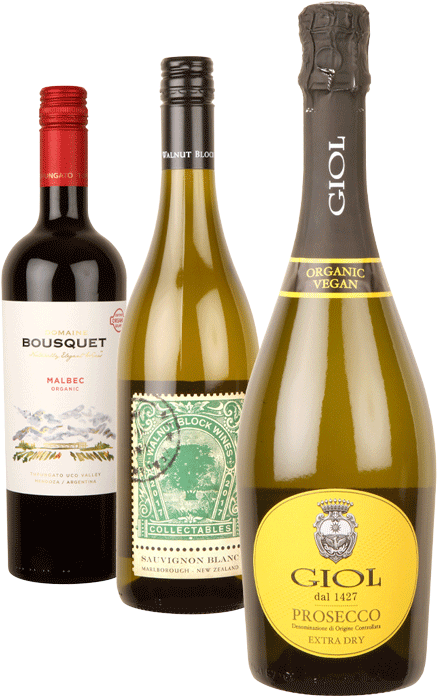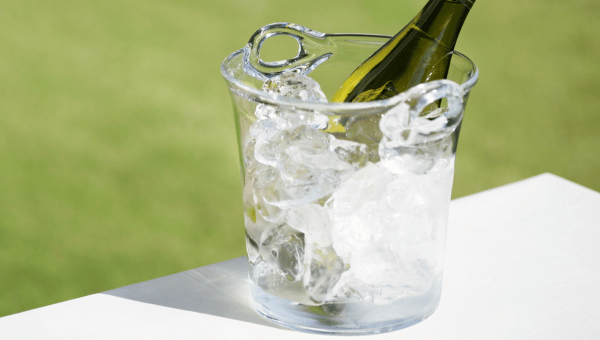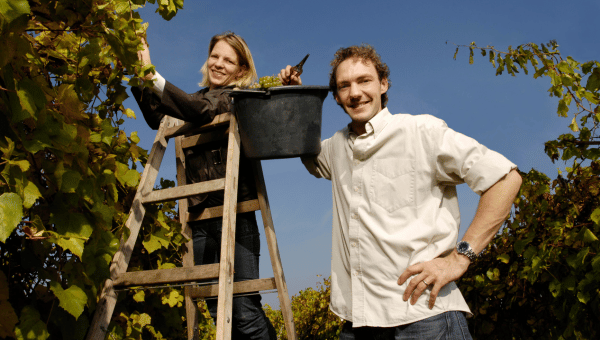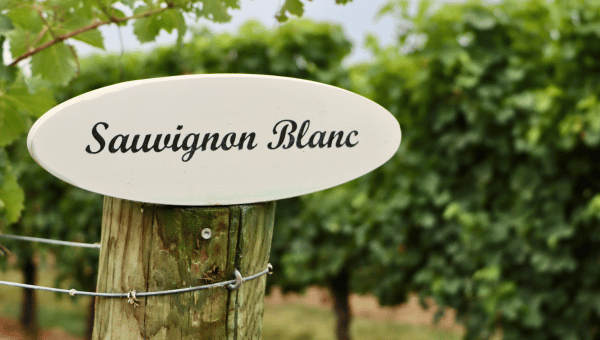List of 10 Famous Spanish Wine Regions
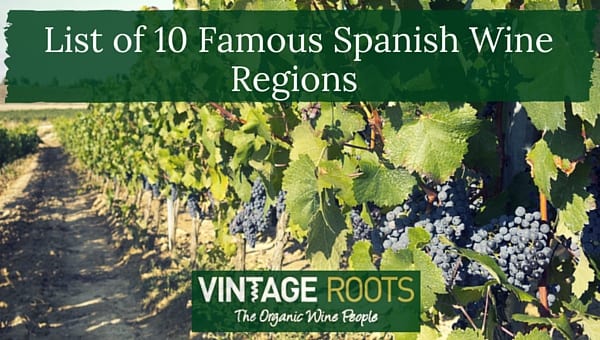
Spain is the largest country in southern Europe and covers almost 200,000 square miles! Visitors to this richly diverse country will find vines planted across its impressive landscape: from the Canary and Balearic Islands to Don Quixote’s La Mancha, and onwards and upwards to Catalonia in the northeast and Green Spain on the Atlantic coast on the west. The Spaniards make wine everywhere!
Estimates suggest that as many as 400 grape varieties are planted across Spain, though there is a Top 20 that includes home favourites such as Tempranillo, Garnacha, Bobal, Albariño and Verdejo.
Every wine style is made here and whether you’re a lover of fine fortified wines (think Sherry!), joyous sparkling or premium, age-worthy reds, Spain has it all.
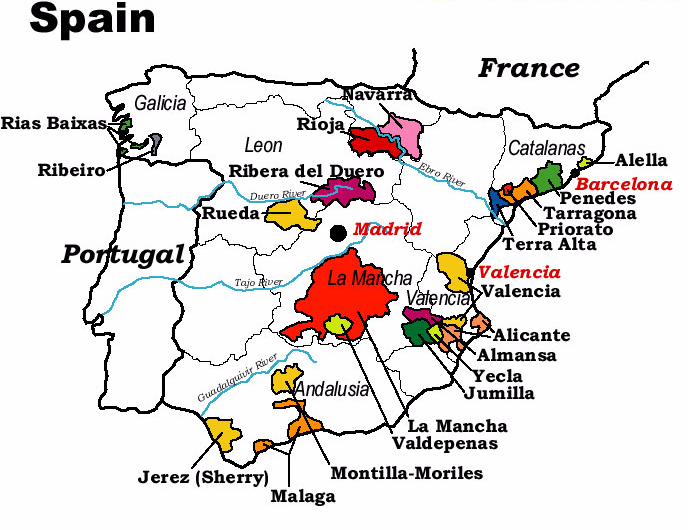
How many wine regions are there in Spain?
There are dozens of wine regions in Spain so it is easier to think about the country in seven parts (we have Food and Wines from Spain to thank for this idea!).
Andalusia
Without a doubt, the most famous DO (Denominación de Origen) in Andalusia is Jerez-Xerez-Sherry, though you’ll find still organic red wines, white wines and organic sparkling wines across the region too.
Vine growing in the southwestern region of Andalusia can be traced back some 3,000 years. Flying into Jerez the landscape can appear harsh and arid but there is more rainfall here that in other parts of Southern Spain. Crucially the limestone-rich soils, known locally as albariza are able to retain the much-needed waterfall under the soil that forms a hard crust in the summer heat. Isn’t nature clever?!
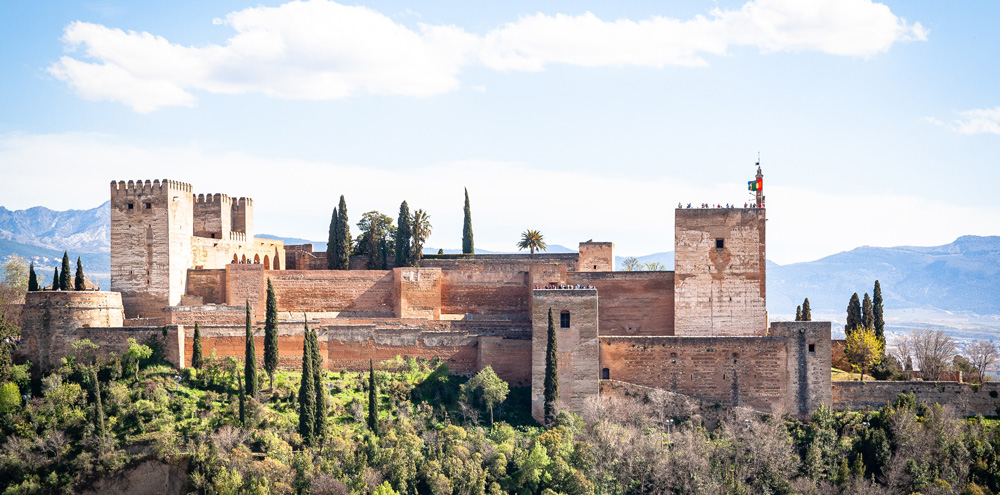
We have a stunning selection of organic fortified Spanish wines from Andalusia but ours are made in a separate DO called Montilla-Moriles. The climate here is particularly favourable to organic grape growing which is why our range comes from here. Located in the province of Córdoba, the wines are made in pretty much the same way as Sherry and they’re often hard to tell apart but there are notable difference, including more dramatic day and night time temperatures and even hotter summers. Also, where Palomino Fino is the principle grape in Jerez, Pedro Ximénez dominates in Montilla-Moriles.
We work with two producers in Montilla-Moriles: Gomez Nevado and Piedra Luenga. Both make delicious, food-friendly wines.
Duero River Valley
Some of the most thrilling organic Spanish red wines are made in the Duero River Valley… The roll call of DOs include: Ribera del Duero; Toro; Rueda and Cigales. The translation of Ribera del Duero is ‘banks of the River Duero’ – an apt name as the vineyards for this DO and the others are planted within striking distance of this 460-mile-long river.
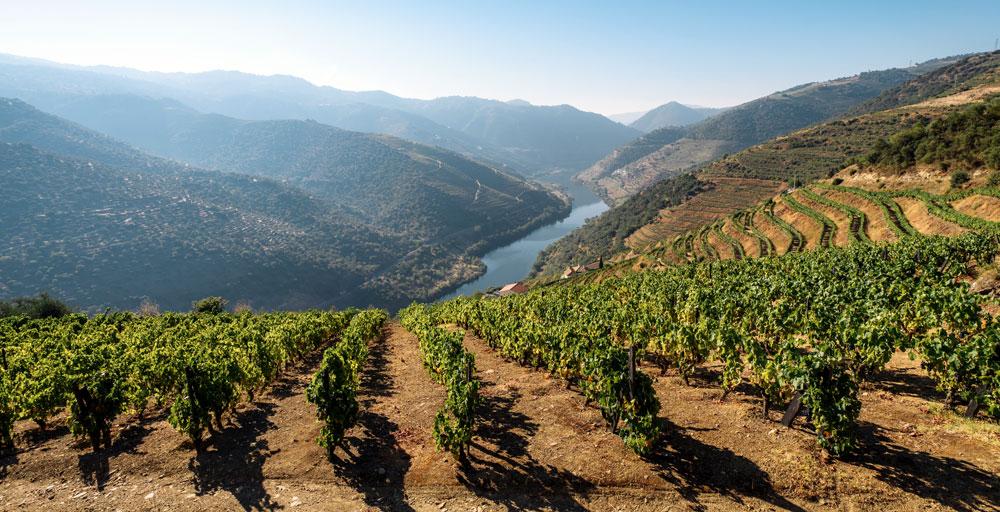
Tempranillo is the grape of this region, and you’ll find it in many styles, from the robust, powerful wines of Toro to those with arguably more complexity from Ribera del Duero. Toro’s vineyards are mostly plated on sandy/clay soils, at altitudes of 650 to 820 meters above sea level. The Ribera de Duero vineyards sit higher, reaching 1,000 meters above sea level. The vines stretch their roots into 32 different soil types; the most notable being the alternating layers of limestone and mark that are found in some plots.
A top hit with our customers for some years now has been Dominio Basconcillos’ Ribera del Duero.
Well worth a try if you haven’t had a chance to get to know it!
£24.00
Rueda is white wine country. The denomination was created in 1980 and the key grape here is Spain’s Verdejo. It is thought that the variety arrived in Spain from North Africa, meandering its way through southern Spain, adapting as it headed north. The best soils of Rueda are dark grey-brown and gravelly, rich in calcium and magnesium with good drainage.
See for yourself and try this great organic Verdejo from Rueda:
Ebro River Valley
Rioja anyone?! Yes, indeed. Rioja is the most famous name of the Ebro River Valley. However, take note, it’s not the only great denomination in the area. Look out for wines from Cariñena, Campo de Borja, Somontano and Calatayud too!
Rioja isn’t just a DO it is a DOCa! It was promoted in 1991, having proven consistency and quality for such an extensive period of time. Divided into three distinct zones: Rioja Alta, Rioja Alavesa and Rioja Baja, the vineyards can be found anywhere between 350 and 650 meters above sea level. Although soils vary considerably, Rioja Baja is recognised for clay and alluvial soils, whilst Rioja Alavesa has more calcareous clay. In Rioja Alta, it’s a real mix with ferruginous clay, calcareous clay and alluvial soils too!
Whilst Tempranillo is by far the most widely planted variety, Graciano, Garnacha, Mazuela and Maturana Tinta are also permitted red varieties! Don’t forget that there’s white Rioja wine too and the main grapes are: Viura, Malvasia and Garnacha Blanca.
What type of red wine is Rioja?
The region is divided into three distinct parts, with each producing wines of quite differing styles. The red Rioja wines from the Rioja Alta are generally thought to be the lightest and most aromatic, thanks to the area’s comparatively cool climate and highest elevation. In contrast, the wines from Rioja Baja are generally rich in colour and deeply fruity in flavour. The climate here is warmer and drier. Sandwiched between the two is Rioja Alavesa where the wines are known for their impressive structure and flavour.
Red Rioja wines can be differentiated as either vin joven, crianza, reserva or grand reserve.
As you might have guessed, this is all about the wines ageing history. A ‘vin joven’ or young wine is just that and will be the freshest, most fruit led of the red Riojas.
Red crianza wines will be three years old when they’re released and will have spent at least one year in oak barrels. A red reserva wine will have been aged in oak barrels and bottled for three years, 12 months of which must have been in oak, followed by at least six months ageing in the bottle before being released for sale. Gran Reserva reds must be aged for a minimum of 60 months, at least two years of which will have been in oak barrels. Gran Reserva red wines must be aged in bottle for two years or more before being sold.
Viña Ijalba must be one of the producers with whom we have worked the longest and we have long loved their organic Rioja wines. Explore their range here.
This famous vineyard was the first to go fully organic and the first to produce a 100% Garciano-based
organic Rioja wine. They also work with recovering rare Rioja grape varieties which you can discover and enjoy.
Green Spain
With some of the trickiest to spell (and pronounce) DOs, Green Spain is home to some of Spain’s most thrilling organic white wines, as well as some delicious organic red wines too. Aromatic varieties such as Albariño, Treixadura and Lourero thrive here and the vibrant red Mencía is a gem of a variety!
DOs you might have heard of? DO Valdeorras, Ribeira Sacra, Rías Baixas, Navarra…
Technically DO Navarra sits in the area called Green Spain but for many, it’s part of the Ebro River Valley.
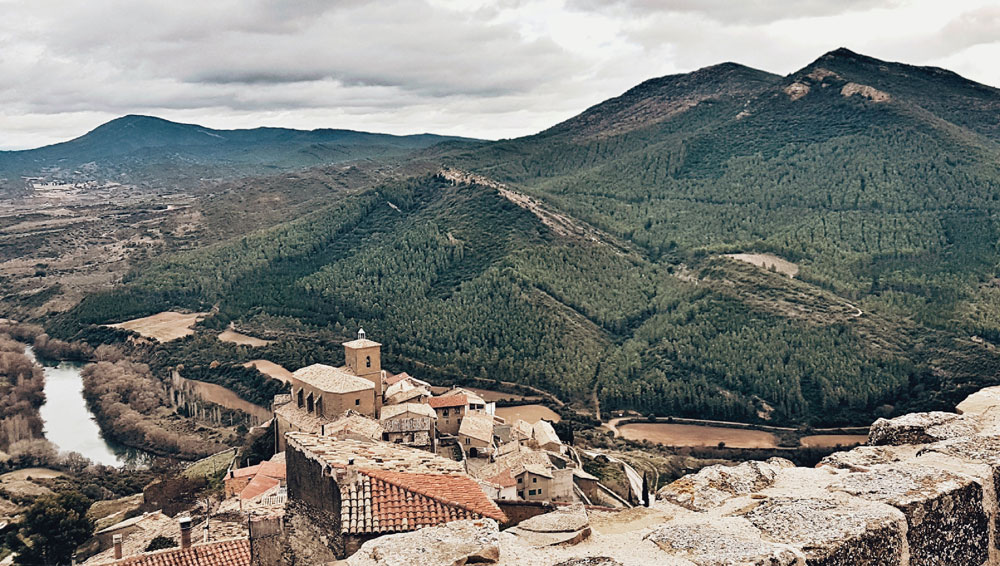
For many, Albariño and the region of Rías Baixas were barely on the wine-drinking radar a decade or so ago and yet now, it’s positively uncool not to have at least one bottle in your stash! Fragrant and fruity, often with great breadth and complexity, the wines have put Galicia firmly on the map.
The soils there are sandy with a granitic base and vineyards don’t go higher than 300 meters above sea level. The proximity of the Atlantic and its salty, blustery breezes certainly make their mark on the wines.
Try our Bodegas Corisca Albariño:
£24.50
The Islands
For those fortunate to have travelled and taken a holiday to the likes of Lanzarote, Menorca and Gran Canaria, it seemed surprising that the wines made there hadn’t reached UK shores for so long. Well, they have now, and it is a great thing.

The wines made on the island of Mallorca are all classified VdT and so far, a modest 740 hectares are planted to vine. The red, limestone soils are planted with a diverse range of local and international varieties including Persnal (Moll), Chardonnay, Malvasía and Riesling for white and Callet, Manto Negro, Tempranillo and Gorgollassa for the reds!
The Mediterranean Coast
What we are talking about here is really Cataluña (Catalonia). In Spain’s northeast, it is home to some exceptionally fine organic red wines, white wines and organic sparkling wines too.
Some of Spain’s most well-known DOs have their home here: Catalunya, Cava, Costers del Segre, Jumilla, Monstant, Penedés and Priorat (DOCa) amongst a host of others.
Penedés has long been at the forefront of innovation in Spanish winemaking. It was here that stainless steel and cold fermentation was first used in the country and experimentation with international varieties was quick to start here too. Within the Denomination, there is also the ‘Clàssic Penedès’ for sparkling wines which have strict rules, including being organic only.
Organic pioneers and Catalans, through and through, Albet i Noya make a fantastic range of wines from grapes grown throughout the region. From day-to-day favourites to age-worthy reds, they’ve got it ALL covered!
Here are some of our favourites:
£14.99
£12.50
£15.75
Priorat is a big name making big wines! It is, along with Rioja, one of just two denominations with DOCa status. The soils there are shallow, with low organic content matter and are formed mostly from disintegrated slate, known locally as llicorella. Garnacha dominates the plantings with Mazuelo and Temrpanillo also popular.
The new kid on the block, Montsant, has only been a DO since 2002. The vineyards partly encircle those of Priorat, and some have mistakenly tried to lob them together. Montsant wines are quite distinct. Garnacha and Carignan are the main varieties but are often blended with the likes of Cabernet Sauvignon, Merlot and Syrah before bottling.
Looking for a star organic Montsant? Look no further than the DIT Celler’s Cabirol:
The Meseta
DO La Mancha is Spain’s largest DO and is also the world’s largest wine-producing area with almost 165,000 hectares of vineyard. The vast plains of the Meseta have produced some great, value drinking for a long time but this area also has some spectacularly high-quality wines. You will find two of Spain’s most recognised ‘Pago’ in The Meseta.
If you fancy sampling a spot of wine magic from La Mancha, try the El Troyano from Parra Jimenez:
£12.50
What is the best organic wine region in Spain?
The technically correct answer to that question is DOCa Rioja and DOCa Priorat because they are the only two regions to be recognised with Qualified Designation of Origin status. What do you have to do to be DOCa? In a nutshell, it’s all about demonstrating consistent high quality over a long period of time.
A more romantic and subjective reply is the one that recognises all our tastes and preferences are different. Also, we can be in a mood for one style of wine one day and quite another the next. Happily, Spain’s regions have pretty much every wine style on offer, whatever you fancy.
What types of Spanish organic red wine are there?
According to Spanish Organic Wines, 27% of Spain’s vineyards are organic which is an impressive 121,279 hectares. The country is also the third-largest producer of organic wines in Europe (behind Italy and France).
Consequently, there is a vast range of Spanish organic red wine. Regions such as Toro, La Mancha, Priorat, Ribera and Rioja are famous for their rich, full-bodied wines, though you’ll find lighter styles in these regions too. Fans of fresher, more vibrant red wines should head to Green Spain where the reds made from Mencía and even Garnacha can be surprisingly and gloriously refreshing.
What makes organic Spanish wine different?
As we all know, there is an endless list of factors that contribute to a wine’s uniqueness: specific microclimate, winemaking, vintage conditions, ageing and the grape varieties themselves.
Spain’s indigenous grape varieties are hugely important in understanding what makes Spanish wines different. The list is long and lengthy but here are a few to keep your eyes peeled for:
Organic Spanish White Grapes
Albariño. A now much-loved grape with fans worldwide, Albariño’s home is Galicia where its thick skins are well equipped to deal with the sometimes merciless Atlantic climate! Very high-quality, aromatically distinctive wines.
Godello. Still a little in the shadows of Albariño, Godello is nevertheless a high-quality white wine grape, whose wines can be quite broad-shouldered and textured. Normally excellent with food.
Verdejo. The shining white grape of Rueda. Premium white wine with complex, herbal aromas and wonderfully expressive palates. Not everyone knows just how well these wines can age.
Xarel.lo. Found widely in Penedés, you will find it often as a blend in the sparkling wines of the region. It is also made a still white wine with pronounced flavours and plenty of verve.
Our favourite organic Spanish white wines:
Did you know there’s a Blanca Garnacha as well as a Tinto? The best way to discover a grape is, of course, to taste it and there are few finer examples than the (no added sulphur) Symphony Garnacha Blanca from Bodegas Tempore. This is a punchy white, rich in colour and with layers of fleshy tropical fruit and a long, nutty finish.
£16.95
If you prefer your organic white wines on the zippier, crisper side of things then try the citrus-laded Curios Xarel.lo from Albet i Noya. Spain has embraced international grape varieties in its modern winemaking history and it is lovely when you see a big grape star standing shoulder to shoulder with a local favourite.
£13.95
Spain has some rare grape varieties too, and we would highlight the excellent Maturana Blanca from the Ijalba Rioja estate, it has a big and lush stone fruit character, laced with minerality and very subtle oak influence, adding further complexity.
£19.75
Organic Spanish Red Grapes:
Garnacha. Known as Grenache in France, this Spanish variety is found countrywide. It was pivotal to putting Priorat on the world map of fine wines and has yielded stunning wines in many regions, including Navarra, Camp de Borja and Somontano too. Laden with fruit and charm.
Monastrell. Another variety that’s often confused with being French! The wines from this grape are often powerful, dense and quite gamey. It likes to be warm and does well in the likes of Jumilla and Yecla.
Mencía. Increasingly getting the respect and recognition it deserves. Found in Spain’s north-west, it can deliver lovely, fragrant fresh wines but as more old, low-yielding vines are being identified and brought back to life, there is an increasing number of bolder, more complex wines around.
Tempranillo. The name comes from ‘temprano’, meaning early and likely due to the grape’s early-ripening quality. You’ll find it all over Spain with some saying it’s the country’s indigenous answer to Cabernet Sauvignon. As the principal player in wines such as Rioja and Ribera del Duero its capability for producing world-class, fine wines is not in doubt. It’s also a very successful young wine grape with plenty of bright, ripe red summer berry fruits in its armour.
Our favourite organic Spanish red wines:
We are big fans of Spanish organic wines so it’s tricky to pick the ‘favourites’ of the red crop! However, here are three wines that we think sum up the flair, diversity and deliciousness of organic Spanish red wines.
Bodegas Piqueras Old Vines Garnacha is a characterful, richly fruity red from southeast Spain. Juicy, moreish and laden with cherry, black plum and sweet baking spices, this is a wine that never fails to please.
£12.95
For many, Rioja is the red wine of Spain and if you’re looking for a cracker stop the search at Viña Ijalba’s Rioja Crianza – 90% Tempranillo with a splash of Graciano, this oak-aged, multi-award winner is a stunner!
Bodegas La Purisma has delivered a star organic red wine from the red grape, Monastrell in their “Old Hands Monastrell Roble”; delivering way above its price point, it is quite full-bodied with ripe, soft tannins and plentiful figgy and chocolate-coated fruit.
£11.99
What does organic Spanish wine taste like?
In one word: Delicious!
With several hundred grape varieties planted across many hundreds of thousands of hectares, being turned into wine but thousands more winemakers, generalisations are pointless.
Our advice? Get sampling!! We have (web) pages full of outstanding organic Spanish wines: red, white, rose, fortified and sparkling. We can guarantee we have an organic Spanish wine with your name on it. Shop our full range here or give us a call for advice.



